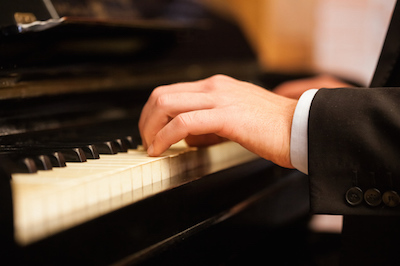The concept of touchweight is very simple: it’s the amount of pressure required to make a piano key go down. To determine the measurement, gram weights are placed on the end of a key until the key goes down.
 When building a piano in today’s marketplace, the touchweight is a fairly standard measurement. It’s measured in grams with majority of piano manufacturers aiming for a touchweight of around 50 grams. If you go back in time to the early 1900s, you will find many pianos measured touchweight in ounces, which is a much less sophisticated form of measurement. There are approximately 28 grams per ounce. So even if touchweight was pushed to two ounces, the touchweight was a fairly heavy touch.
When building a piano in today’s marketplace, the touchweight is a fairly standard measurement. It’s measured in grams with majority of piano manufacturers aiming for a touchweight of around 50 grams. If you go back in time to the early 1900s, you will find many pianos measured touchweight in ounces, which is a much less sophisticated form of measurement. There are approximately 28 grams per ounce. So even if touchweight was pushed to two ounces, the touchweight was a fairly heavy touch.
When you push down on a piano key, the key is connected to the hammer. This process lifts the hammer and strikes the strings to make a sound. While the key itself may move a mere 3/8” to complete its process, the hammer travels a much greater distance, as much as 5 to 7 times greater than the distance used to push down on the key.
Touchweight only gauges the minimal amount of pressure needed for the key to go down. This is known as static touchweight. Dynamic touchweight defines the actual pressure required under a variety of playing conditions. And by its very nature is harder to define. Pianos can be played loudly or softly. Notes can be played in rapid succession or slow and easy. Pedals can be used to sustain different movements. All of which will effect the touchweight for a key.
In addition, every piano is created in a different way, with different parts and with different functionality. As humans, we can perceive this differently. Which is why a piano player can move from one piano to the next, and make automatic assumptions as to the playability of a piano.
If a piano provides less volume, it may be perceived as harder to play. If they have to give more or themselves in order to create the sound they are looking for, they may deem a piano requires more effort.
Just like any form of creative movement, a piano is as unique as the player themselves. In order to find the right piano that meets your qualifications for you to play, you have to test its playability before you bring it into your home to play indefinitely. Testing is critical to purchasing the right piano for you.

